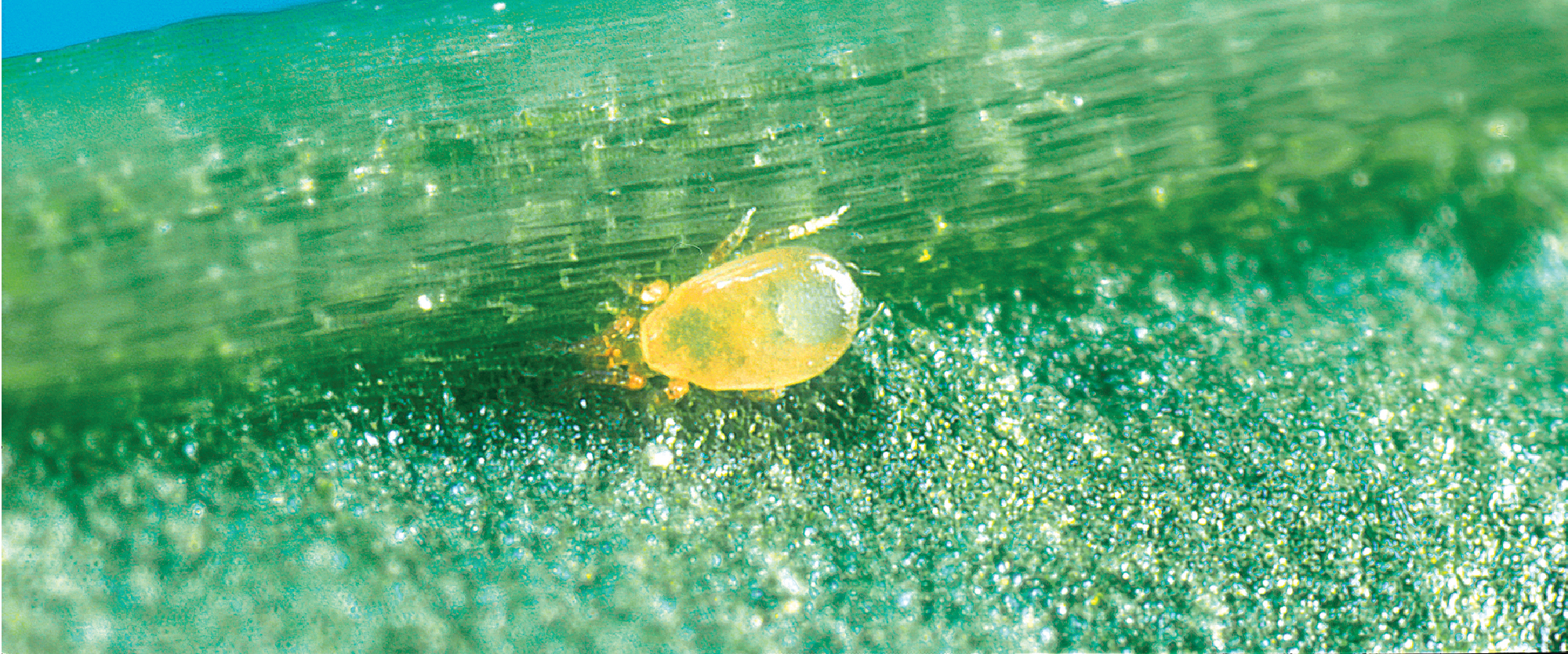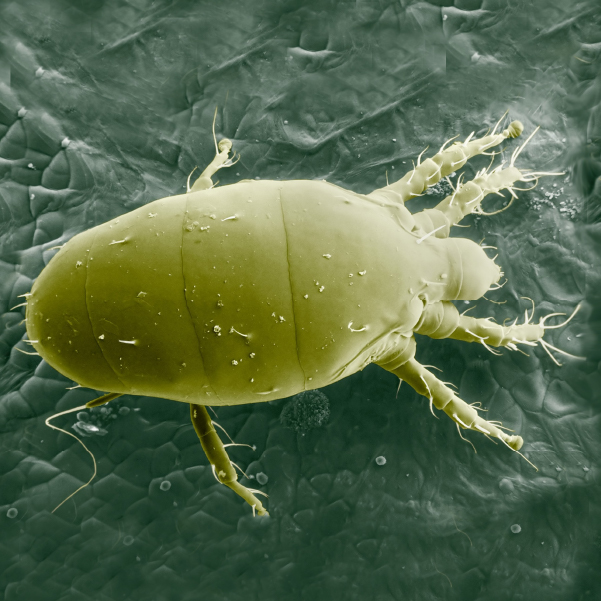BioCucumeris (Neoseiulus cucumeris) is a predatory mite widely used in the control of immature thrips (egg and larvae) as well as other species of mites. Although very small (1mm), BioCucumeris can be recognized by its oblong shape and quick mobility along the underside of leaves and in flowers.
Its ability to feed on pollen makes it an effective early prevention agent.
Consult your local BioBee representative for additional details.
Target Pests
Product

- Bottle containing 100,000/250,000/500,000 mites
- Box 250 sachets (1000 individuals/sachet)
Application

- BioCucumeris is shipped in insulated, chilled boxes. Packaging must be kept intact until placed in the field.
- Keep in a cool location until release.
- Remove the product containers from the box, one at a time and empty their content as quickly as possible.
- Before use turn, roll the bottle back and forth gently, to mix BioCucumeris with the medium.
- The predators are released by sprinkling the contents of the bottle on the leaves of the host plants, preferably in a shady area.
- Do not expose the bottles to direct sunlight.
Before combining BioCucumeris with any chemical pesticide in the crop, please consult your BioBee technical representative.
Crops
Storage
-

Storage temperature
-

Roll back and forth before use
-

Do not store in sunlight
-

Store horizontally
Disclaimer
BioBee Sde Eliyahu Ltd. produces and markets biological products. Production is carried out using innovative techniques under controlled quality assurance standards such as ISO 9001:2015, as well as IOBC’s international standards for mass-production of insects. All products are tested to meet specification requirements before leaving the factory.
The success of biological pest control is affected by the crop’s initial pest population (upon application of the product), weather conditions and chemical residue present in the crop, among other possible aggravating factors.
Under no circumstance shall BioBee be liable for the outcome of the implementation in the field, as it has no control over local conditions, the application method, or the possible improper treatment/storage of the product.
















